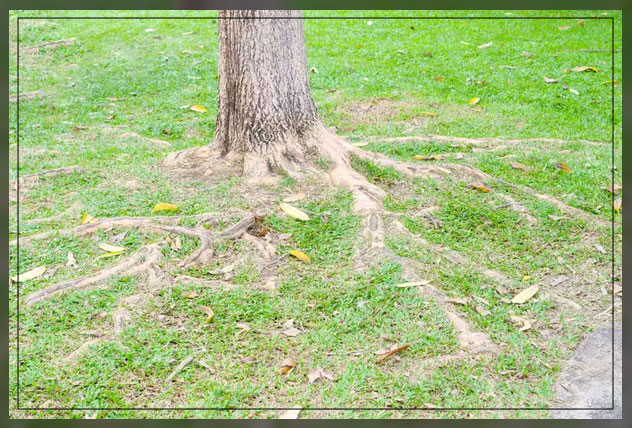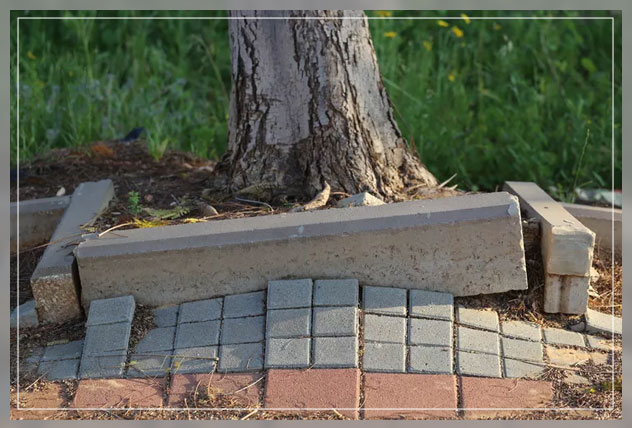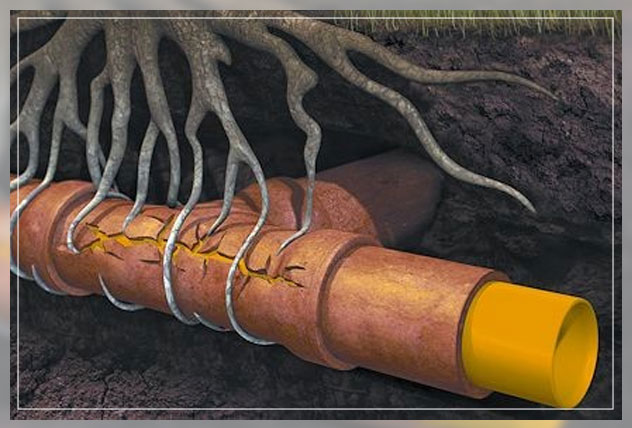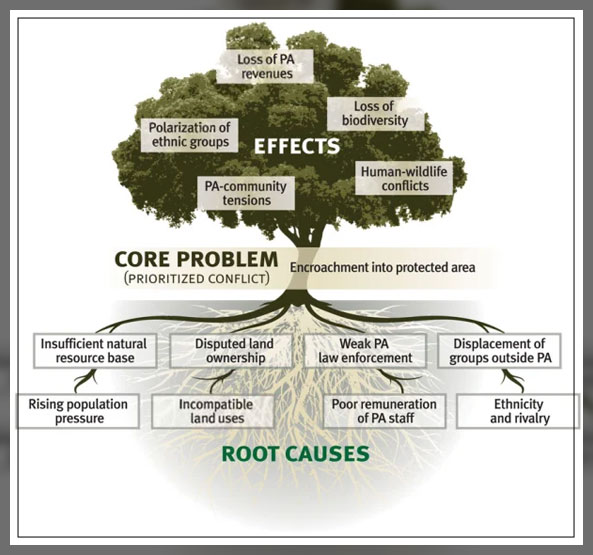Is the health of the trees in your garden gradually declining? Like the plants, tree roots can also fall prey to pest and disease as well as rotting and lacking moisture.
Usually the invasive tree roots are problematic for homeowners and also in commercial settings.
Since these problems may arise, it is best to first look at the suckering ability of the roots and tree types.
This article discusses the problems that can arise due resulting in damaged tree roots.
Keep reading below to know more!

Knowing Tree Roots and Its Spread
The roots of a tree can spread wider than its radius.
They can reach a whopping two to three times greater spread than the canopy’s radius.
If the conditions are drier, then that means it can spread up to about 5 times wider.
This means that if a tree that has a canopy of 12 feet, a radius of 6 feet and the roots can spread as far as 18 to 30 feet from the trunk.
Using the roots, trees gain nutrition and stability.
Tree root systems can be narrow, deep wide or shallow.
In fact, some of these have little peripheral root growth or having a massive taproots.
On the other hand, you have conifers which have their spread out extensive root masses.
In order to search for resources, these spread out from the base of the tree.
These have surface feeder roots and also deeper spreading roots.
These feeder roots branch in order to send smaller growths to attain water and food for plants.
Usually these surface roots that grow larger eventually break the surface of the soil.
That results in tree root problems.
Roots are found near the place where they need the essential material for survival.
Oxygen, water and nutrients are usually near the surface.
Thus, roots are found near about 18 to 24 inches in the upper soil.
These can cause problems and some can result to the roots as well.
Let’s find out how!

Deteriorating the Sidewalks and Pavement
As the tree roots expand, they can grow even closer to and pavements and sidewalks.
These cement and brick works are hard but do not underestimate the strength of the tree roots.
If they come closer to the surface, these can even lift the pavement.
It will then create a tripping hazard and damages the entire pavement.
If that happens, it is a this or that situation.
You can either save the tree by moving the pavement away from the roots.
Or you may save the pavement or walkway by severing the roots and also risking killing the tree as a whole.
Though, there are ways by which you can prevent the damage from exacerbating.
Prevention
One way is to install mechanical barriers that are along the tree side of the pavement.
This helps in preventing the roots from growing underneath the pavement.
Instead they grow deep in the soil.
Therefore, they do not lift the pavement.
These barriers are usually of geotextile fabric or even plastic.
In order to make it work, place the barrier about a foot deep inside the soil.
Measure using an imaginary line from the trunk of the tree to the sidewalk.
Now you can place the barrier about five or six feet along the sidewalk in each of the direction.
Another way of preventing the destruction of the pavement is to plant smaller trees.
Also plant them in areas where there is a minimum distance of at least 4 feet from the pavement.
You should plant a tree that has a mature height lesser than 30 feet at least 5 feet away from the sidewalk.
Similarly, plant a tree with a height up to 50 feet 5 to 6 week from the pavement.
Avoid planting trees with a greater height than that.

Tree Roots Damaging the Underground Pipes
Usually pipes break on their own.
They get physically weak over time thus, the tree roots easily penetrate the pipe, growing into them.
Invasive tree roots want water and nutrients so they are drawn in
This leads to blockages especially in sewer pipes.
In fact, there are certain trees that cause that are more likely to cause these damages rather than the others.
These include, the maples, willows, birches, swamp oaks and aspens.
So how can you prevent this from happening?
Well, the answer is in landscaping.
You will need to have a sewer-safe landscaping from the time you are building your garden.
Prevention
Before you start planting, examine your property thoroughly.
You should already beware of where the pipes are in your property.
Knowing that will prevent you from planting trees anywhere near that area.
In fact, you should be planting as further away from the pipes as possible.
If you are still unsure whether these pipes may end up causing trouble to your sewage pipelines, you may as well not plant trees that are problematic in this aspect.
Skip the sycamores, fig trees, elms and poplars.
Rather go for flowering dogwoods, amur maple, Japanese maple and crabapple.
This way you will have trees that will not cause any problems to your pipelines.
One other way to go about the whole ordeal is to lay down good quality pipes if you are building a home.
This cannot work for all the pipeline already present in the area but you can manage it in some place.
This way they will not get weak soon, though these getting old is inevitable.
For that reason, it is better to be careful.
Choose the trees you plant wisely because a sewage blockage will create more problems than expected.

Surface Roots Causing Damage
The tree roots can protrude from the surface when there is soil erosion.
The root exposure is definitely unsightly.
Moreover, the freezing and thawing cycles after winters will result in frost heaving making it more troublesome.
It is very difficult to mow the lawn with the exposed roots which can result in injury.
The prevention can either include mulching or even removal.
Planting Unproblematic Trees
Clearly planting trees with that do not have an invasive root system can be an option.
The tree root systems of acacia, vine maples and Japanese fir are minimally invasive, hence, they will not spread as much.
Other trees may also have low potential of damaging roots or causing harm to the infrastructure around you.
Plus look out for trees that have the attributes that can prevent root damage.

Mulching
Do not severe the roots before trying mulching.
Mulch the area with well-matured loose compost or even hardwood mulch.
Remember to not cover the roots with plenty of soil.
Never raise the ground level in order to add more soil.
Moreover, adding more soil deprives the tree itself of nutrients, air and water.
Mulching on the other hand, allows oxygen through and insulates the soil.
Therefore, it reduces frost-heaving.
When you replace the mulch with grass, you no longer have to mow.
Moreover, the tree and lawn no longer compete for oxygen, water and nutrients.
Removal
When invasive roots problem gets out of hand, the only solution remains tree removal.
Moreover, ground the stump to prevent the growth of roots.
If stump grinding is not an option, grill holes to cover it with soil or you could use a stump decay accelerator.
Next install a root barrier around younger trees with a height of 18 to 24 inches around root zone.

Are Tree Roots Damaging to Foundation?
Tree roots will not necessarily harm the foundation of your garden.
In fact, many problems can result from the proximity of trees with the foundation but the roots specifically are not be blamed for that.
That is because the soil that is present around the foundation is dry and lacks moisture.
Whereas the roots tend to grow towards the moisture.
Hence, they will not exactly impact the foundation especially if the area has a roof overhang which makes it even drier.
That said, if there are already cracks present in the foundation, that does not bode well as small tree roots may easily penetrate that.
The cracks can be due to soil pressure or shrinking.
The roots penetrating those cracks do not cause more damage than what already exists.
Hence, your foundation is not at a huge risk.
Any of these tree roots problems should not stop you from planting trees in your garden.
But the best way to prevent any of these problems from occurring beforehand is to select a proper location and the variety of trees.
Naturally go for trees that are not as susceptible to root damage.
This will prevent you the hassle of handling the damage that comes with invasive spread out roots.
Hence, you should be going for the right tree selection to begin with.
Next, remember to select the location that is a little further from pavements, sidewalks, pipes and foundations.
In case, the roots spread, if they are at an adequate distance, they will not affect your landscape.
Finally,
Tree roots have their own sets of problems like rotting, pests and girdling.
But there are also some for the problems they can cause to your landscape.
Refer here to know the problems that you should know before planting trees in your garden.






Leave a Reply